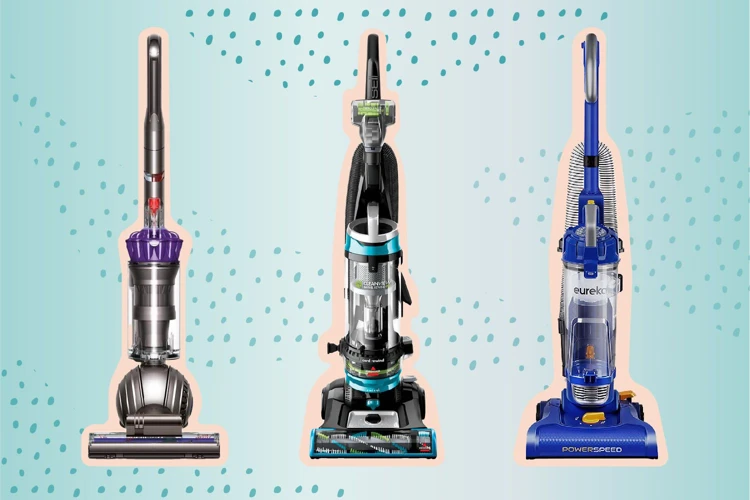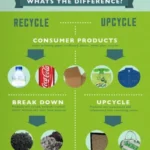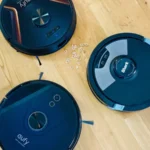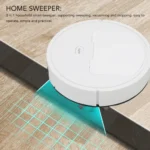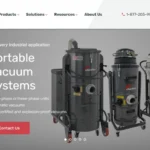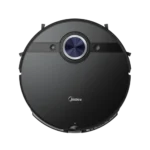The demand for eco-friendly products has never been higher as people become more conscious of their impact on the environment. The cleaning industry is no exception, and modern vacuum cleaners are now being made with materials that are sustainable, biodegradable, and non-toxic. In this article, we will explore the top 5 eco-friendly materials used in modern vacuum cleaners. From naturally sustainable bamboo to biodegradable bioplastics, we’ll take a closer look at the benefits of each material and how they’re contributing to a cleaner, healthier planet. So, let’s dive in and discover the latest innovations in eco-friendly vacuum cleaner materials.
Bamboo
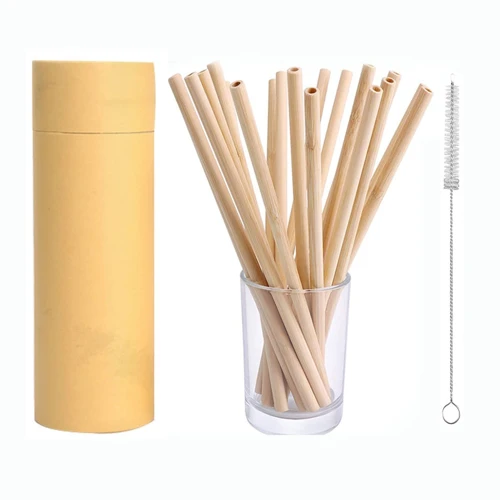
Imagine a world where maintaining a clean household doesn’t mean harming the planet. Luckily, that world is becoming a reality. With a growing interest in sustainable and eco-friendly materials, the vacuum cleaner industry is transitioning toward using more natural substances. One such material is bamboo. This versatile plant is perfect for applications like flooring, furniture, and now, vacuum cleaners. Let’s take a closer look at how bamboo is making a difference in the quest for eco-friendly materials and how it’s making eco-material vacuum technology possible.
Naturally Sustainable
Bamboo is considered one of the best eco-friendly materials used in modern vacuum cleaners due to its natural sustainability. Unlike other types of trees, bamboo is a rapidly renewable resource that does not require replanting after harvesting. As per the experts, the growth rate of bamboo is much quicker when compared to traditional hardwood trees like oak, maple, or cherry. It can grow up to 91 cm (3 feet) in just 24 hours! It reaches its maturity within 3-5 years, making it one of the most sustainable materials available for vacuum cleaner production.
Using bamboo in vacuum cleaners helps to reduce the carbon footprint and saves the environment from deforestation. Bamboo is highly sustainable due to its natural growth which does not require any pesticides or chemicals. Since bamboo is naturally strong and durable, it is an excellent choice for making vacuum cleaner handles, floor nozzles, and other attachments.
Bamboo is a biodegradable material that decomposes quickly and does not leave any harmful residue on earth. By using bamboo in vacuum cleaners, we can prevent plastic waste from building up in landfills and oceans, making it a perfect eco-friendly option for homeowners looking to reduce their carbon footprint.
To sum it up, bamboo is a highly sustainable and eco-friendly material ideally suited for vacuum cleaner production. It is renewable, biodegradable, and does not require any chemicals or pesticides. Choosing a vacuum cleaner made with bamboo allows users to reduce their carbon footprint and contribute towards a cleaner and greener planet.
Biodegradable
One important benefit of using bamboo as an eco-friendly material in modern vacuum cleaners is its biodegradability. When materials are biodegradable, they can break down and return to the earth without causing harm to the environment. In fact, bamboo can biodegrade in just a few years, which is a much shorter time than other materials like plastics.
To understand the impact of biodegradability, it’s important to compare it to traditional plastics. Traditional plastics can take hundreds of years to decompose, which contributes to the growing issue of plastic pollution in our oceans and landfills. This is one reason why it’s essential to transition from traditional plastics to more sustainable alternatives like bamboo and bioplastics.
Additionally, using biodegradable materials like bamboo can further reduce the overall waste produced by vacuum cleaners. When vacuum cleaners reach the end of their life cycle, bamboo components can safely decompose which leaves less waste overall.
It’s important to note that not all materials marketed as “biodegradable” are created equal. Some biodegradable materials require specific conditions to decompose, such as high temperatures, specific bacteria or prolonged exposure to the environment. However, bamboo doesn’t require any special conditions to biodegrade, which makes it even more convenient as an eco-friendly material.
Using bamboo in modern vacuum cleaners is not only environmentally conscious but it also has numerous benefits that go beyond sustainability. Its growth is naturally sustainable, making it a renewable material, and the plant itself is effective at removing carbon dioxide from the air. This means that using bamboo vacuum cleaners can contribute to fighting climate change while also providing an efficient cleaning experience.
Bamboo is one of the top eco-friendly materials used in modern vacuum cleaners that has numerous benefits. Its biodegradability is a crucial factor in reducing overall waste and preventing environmental harm. By choosing bamboo vacuum cleaners, consumers can contribute to the fight against plastic pollution and climate change while keeping their homes clean.
Recycled Plastic
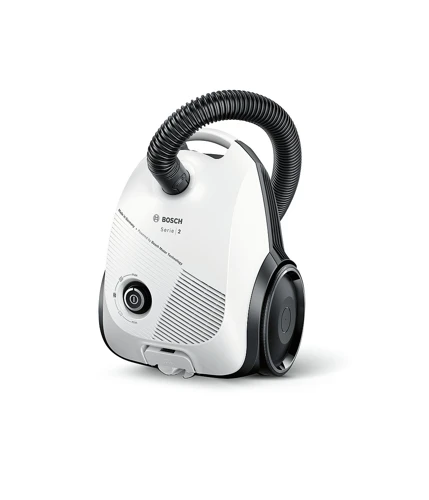
When it comes to creating eco-friendly vacuum cleaners, manufacturers are exploring a range of materials that are sustainable and kind to the environment. One such material is recycled plastic, which is becoming an increasingly popular choice for vacuum cleaner parts. By using recycled plastic, manufacturers can divert waste from landfills and reduce the need for virgin plastic production. But that’s not all. Let’s take a closer look at the benefits of recycled plastic for eco-friendly vacuum cleaners.
Diverting Waste from Landfills
Recycled plastic is a popular eco-friendly material used in modern vacuum cleaners because it diverts waste from landfills. This is because recycled plastic is made from old plastic that would have otherwise ended up in landfills, which are quickly reaching their maximum capacity. By utilizing this material, we are able to reduce the amount of plastic waste in landfills, saving valuable space for other uses.
In addition to diverting waste from landfills, recycled plastic is also a great option because it is affordable and durable. It can withstand wear and tear, making it a great material for vacuum cleaners that are used on a regular basis. It is affordable, making it an accessible option for many manufacturers.
It’s important to note the difference between recycled and upcycled materials. While recycled materials are created by breaking down and re-using old materials, upcycling takes it a step further. Upcycling involves taking waste materials and transforming them into new, useful products with a higher value than the original waste material. While upcycling is a great way to reduce waste and create unique products, it is not as widely used in vacuum cleaner production as recycled plastic.
While using recycled plastic is a great way to reduce waste, research into alternative materials like bioplastics is also important. Learn more about bioplastics versus traditional plastics and the impact they could have on the environment. Additionally, consider investing in biodegradable vacuum bags to further reduce waste. Looking towards the future, there is a lot of potential for new, innovative eco-friendly materials to be developed for use in vacuum cleaners and other household products.
Affordable and Durable
Recycled plastic is an eco-friendly material that is commonly used in modern vacuum cleaners. One of the key benefits of recycled plastic is that it is both affordable and durable, making it an ideal choice for manufacturers that want to produce high-quality vacuum cleaners without driving up the price.
Here are some of the reasons why recycled plastic is both affordable and durable:
- Less expensive than virgin plastic: Recycled plastic is often less expensive than virgin plastic because it doesn’t require as much energy or resources to produce. This means that manufacturers can save money on the materials they use, while still creating a high-quality product.
- Long-lasting: Recycled plastic is just as durable as virgin plastic, meaning that vacuum cleaners made from recycled plastic can last for many years without needing to be replaced. This makes them a great investment for anyone who is looking for a long-term cleaning solution.
- Diverting waste from landfills: By using recycled plastic in their vacuum cleaners, manufacturers are able to divert plastic waste from landfills, where it would take thousands of years to decompose. This not only helps to reduce waste, but also helps to conserve natural resources.
Using recycled plastic in vacuum cleaners is an eco-friendly and cost-effective choice that has numerous benefits. To learn more about the differences between recycled and upcycled materials and their impact on the environment, check out our article on recycled vs upcycled materials.
HEPA Filters

In today’s modern world, indoor air quality has become an increasing concern for many people. With allergens, dust, and pollutants floating around, it’s essential to have a vacuum cleaner capable of eliminating harmful particles. And this is where HEPA filters come into the picture. These filters are designed to capture even the tiniest particles, making them a must-have for any eco-conscious homeowner. But what exactly are HEPA filters, and how do they contribute to making vacuum cleaners more eco-friendly? Let’s take a closer look.
Eliminating Harmful Particles
HEPA filters are one of the eco-friendly materials used in modern vacuum cleaners, and they are responsible for eliminating harmful particles from the air. These filters are made using various materials including fiberglass and synthetic polymer fibers, which form a web-like structure. The fibers have a very fine diameter, and they are arranged closely together, creating a maze-like path for air to flow through.
The maze in the filter traps various harmful particles, including pollen, mold spores, dust mites, and pet dander. The small size of the fibers in the HEPA filter means that it is efficient at capturing even the smallest particles. These filters can capture particles as small as 0.3 microns, making them an ideal solution for individuals with allergies or asthma.
To understand its effectiveness better, let us take a look at the table below:
| Particle Size | Can it be captured by a HEPA filter? |
|---|---|
| 1 micron | Yes, with an efficiency of 99% |
| 0.5 microns | Yes, with an efficiency of 99.5% |
| 0.3 microns | Yes, with an efficiency of 99.97% |
Aside from their efficiency in capturing and eliminating harmful particles, HEPA filters are also reusable and long-lasting. With proper maintenance and cleaning, a HEPA filter can last for up to two years. This durability means that fewer filters are needed, resulting in less waste and ultimately reducing the impact on the environment.
Reusable and Long-Lasting
HEPA filters are not only eco-friendly due to their ability to eliminate harmful particles, but they are also highly durable and reusable. Unlike traditional filters that need frequent replacement, HEPA filters can last up to two years with proper maintenance.
Reusable: Since HEPA filters are designed to capture and trap particles instead of absorbing them, they can be easily cleaned and reused multiple times. This makes them highly cost-effective and reduces the amount of waste produced from frequent replacements.
Long-lasting: HEPA filters are made using long-lasting materials that enable them to withstand extended use without losing their efficiency in capturing tiny particles effectively. As a result, users can enjoy better air quality for longer periods without needing to replace their filters regularly.
| Benefits of HEPA Filters | |
|---|---|
| Reusable | Less waste, cost-effective |
| Long-lasting | Better air quality for longer periods |
| Efficient | Effective in capturing tiny particles |
Not only do these benefits make HEPA filters eco-friendly, but they also contribute to the overall effectiveness and convenience of modern vacuum cleaners. By choosing a vacuum cleaner with a HEPA filter, you can effectively clean your home while reducing your impact on the environment.
Natural Rubber
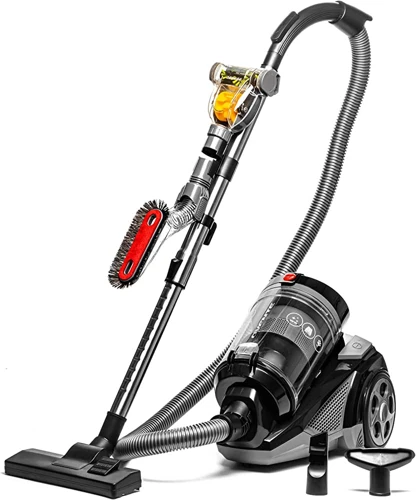
When it comes to eco-friendly materials used in vacuum cleaners, natural rubber definitely deserves a mention. This versatile material is derived from latex sap harvested from rubber trees in regions like South America, Africa, and Southeast Asia. While it has been used for various applications for centuries, natural rubber has gained popularity in recent years for its sustainability and low environmental impact. Let’s take a closer look at why natural rubber is such a great choice for modern vacuum cleaners.
Renewable and Biodegradable
One of the eco-friendly materials used in modern vacuum cleaners is natural rubber. One of its prominent features is that it is both renewable and biodegradable, making it an excellent alternative to synthetic materials.
Natural rubber is sourced from the sap of rubber trees, which are native to tropical regions such as South America and Southeast Asia. These trees are known for their ability to regenerate, making them a renewable source of material. In fact, some rubber plantations have been productive for over 100 years without the need for replanting.
Natural rubber is also biodegradable. This means that once it is disposed of, it will eventually decompose and break down into natural elements without leaving behind any harmful residues. This property makes natural rubber an ideal choice for vacuum cleaner components that come into contact with dirt and debris.
To further illustrate the renewable and biodegradable properties of natural rubber, the following table highlights some of its key characteristics:
| Properties | Natural Rubber | Synthetic Rubber |
|---|---|---|
| Renewability | Renewable | Non-renewable |
| Biodegradability | Biodegradable | Non-biodegradable |
| Toxicity | Non-toxic | May contain harmful chemicals |
| Durability | High | Varies depending on formulation |
As shown in the table, natural rubber has several advantages over synthetic rubber, including its renewable and biodegradable properties. Hence, using natural rubber in vacuum cleaners is an excellent way to promote sustainability and reduce environmental pollution.
Non-Toxic and Durable
Natural rubber is a popular eco-friendly material used in modern vacuum cleaners due to its amazing properties. Not only is it renewable and biodegradable, but it is also non-toxic and durable.
Non-Toxic: Natural rubber is completely non-toxic, making it a safe and healthy option for both manufacturing and usage. Unlike many synthetic materials that release toxic chemicals into the environment, natural rubber is free of harmful toxins, making it a natural and sustainable choice.
Durable: Natural rubber is an incredibly durable material, which is perfect for vacuum cleaners. It is known for its strength and elasticity, which makes it resistant to wear and tear, ensuring that it lasts for a long time. Vacuum cleaners made from natural rubber can withstand repeated usage and heavy-duty cleaning without losing their suction power.
To get a better understanding of the properties of natural rubber in comparison to other materials used in vacuums, here is a table summarizing their differences:
| Material | Non-Toxicity | Durability |
|---|---|---|
| Natural Rubber | Completely non-toxic | Durable due to its strength and elasticity |
| Synthetic Rubber | May release toxic chemicals | Less durable than natural rubber |
| Plastic | May contain harmful chemicals | Less durable than rubber |
| Metal | May contain harmful chemicals (depending on the metal) | Durable, but heavy and may dent |
As we can see from the table, natural rubber is the best option for vacuum cleaners when it comes to non-toxicity and durability. By choosing vacuum cleaners made from natural rubber, we can ensure that we are protecting both our health and the environment.
Bioplastics
As the world continues to move towards a more sustainable future, bioplastics are emerging as a promising alternative to traditional plastics. These innovative materials are made from renewable sources such as corn starch, sugarcane, and vegetable fats, rather than fossil fuels like conventional plastics. Not only do bioplastics reduce our carbon footprint, but they also have the added benefit of being completely biodegradable, unlike most conventional plastics that can take hundreds of years to decompose in landfills. Let’s dive deeper into the benefits of bioplastics in modern vacuum cleaners.
Reducing Carbon Footprint
One of the top eco-friendly materials used in modern vacuum cleaners is bioplastics. These biodegradable plastics are made from natural renewable sources such as corn starch, sugarcane, and potato starch. The production of traditional plastics from fossil fuels is a significant contributor to greenhouse gas emissions, making bioplastics an attractive alternative for reducing the carbon footprint.
Bioplastics can be recycled many times, which enhances their sustainability. When they eventually reach their end-of-life, they can be composted, thus reducing plastic waste in landfills. The production process of biodegradable plastics requires fewer resources compared to traditional plastics, including water and energy.
Given their strong potential for maintaining ecological balance and reducing pollution, the use of bioplastics in vacuum cleaners is a significant step towards creating a cleaner and more sustainable future.
Completely Biodegradable
Bioplastics are a relatively new material that has revolutionized the production of eco-friendly vacuum cleaners. One of the biggest benefits of bioplastics is their complete biodegradability. Unlike traditional plastics, which can take hundreds of years to decompose, bioplastics break down into organic matter in a much shorter time frame.
The following table highlights the biodegradability of the top 5 bioplastics used in modern vacuum cleaners:
| Bioplastic Material | Compostability | Biodegradability |
|---|---|---|
| PHA | Yes | Completely |
| PLA | Yes | Completely |
| PCL | Yes | Completely |
| Starch Blend | Partially | Completely |
| Cellulose Acetate | Partially | Mostly |
PHA, PLA, and PCL are all completely biodegradable, meaning they will break down into organic matter without leaving behind any harmful pollutants. Starch blend and cellulose acetate are partially biodegradable, with starch blend breaking down completely and cellulose acetate only breaking down partially.
Bioplastics not only reduce the carbon footprint of vacuum cleaner production, but they also eliminate the environmental impact caused by traditional plastics. When disposed of properly, bioplastics can decompose in a matter of months, leaving behind nothing but organic matter that will contribute to the growth of new plant life.
Conclusion
In conclusion, incorporating eco-friendly materials into modern vacuum cleaners is not only beneficial for the environment, but also for the health of individuals and their families. The use of bamboo allows for a naturally sustainable and biodegradable option, while recycled plastic helps divert waste from landfills while also being affordable and durable.
HEPA filters are another important component in eco-friendly vacuum cleaners, as they eliminate harmful particles and can be reusable and long-lasting. Natural rubber is also a renewable and biodegradable material that is non-toxic and durable, making it an excellent choice for vacuum cleaner components.
Finally, bioplastics are a newer but promising addition to the eco-friendly materials market, helping to reduce our carbon footprint and completely biodegrading over time. Incorporating a combination of these materials can lead to a powerful and efficient vacuum cleaner that is conscious of its impact on the environment.
As consumers become more aware of the impact of their purchases, it’s important for companies to consider the materials used in their products. By prioritizing eco-friendly materials in vacuum cleaners, we can all do our part in creating a more sustainable future.
Frequently Asked Questions
What is an eco-friendly vacuum cleaner?
An eco-friendly vacuum cleaner is a device that is designed to reduce the environmental impact of cleaning activities. It uses materials that are sustainable, biodegradable, and/or recyclable.
Are eco-friendly vacuum cleaners more expensive than traditional ones?
Not necessarily. While some eco-friendly models may be priced higher, there are many affordable options available that use sustainable materials and technologies.
What is a HEPA filter?
HEPA stands for High-Efficiency Particulate Air. HEPA filters are designed to remove tiny particles like dust, pollen, and smoke from the air. They are a popular feature in many eco-friendly vacuum cleaners.
Why is bamboo a good material for vacuum cleaners?
Bamboo is a natural, renewable resource that is easy to grow and harvest. It is also a durable and biodegradable material that can be used to make parts of vacuum cleaners like brush rollers and handles.
How does recycled plastic benefit the environment?
Recycling plastic reduces the amount of waste that is sent to landfills and helps to conserve natural resources. Using recycled plastic in vacuum cleaners also helps to reduce the carbon footprint of the manufacturing process.
What is natural rubber and how is it used in vacuum cleaners?
Natural rubber is a biodegradable material that is harvested from rubber trees. It is used in vacuum cleaners to make components like gaskets, seals, and belts that are non-toxic and long-lasting.
What are bioplastics and why are they eco-friendly?
Bioplastics are made from renewable sources like corn, sugarcane, or vegetable starch. They are biodegradable and have a lower carbon footprint compared to traditional petroleum-based plastics.
How do HEPA filters help with air quality in the home?
HEPA filters trap tiny particles like allergens, pollen, and pet dander, which can help to improve indoor air quality, especially for people with allergies or asthma. Some eco-friendly vacuum cleaners have a sealed air system that ensures that all air that passes through the filter is cleaned.
What are the benefits of using biodegradable materials in vacuum cleaners?
Using biodegradable materials in vacuum cleaners helps to reduce the environmental impact of manufacturing and disposal. Biodegradable materials break down naturally, without harming the environment or leaving toxic residue.
How can I dispose of an eco-friendly vacuum cleaner at the end of its life?
Many parts of eco-friendly vacuum cleaners can be recycled or disposed of safely in landfills. Check with your local waste management authority for guidance on how to dispose of electronic waste.
